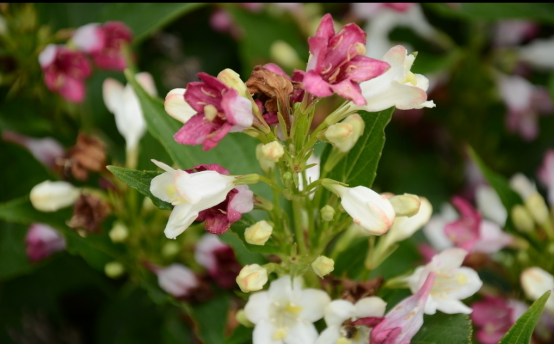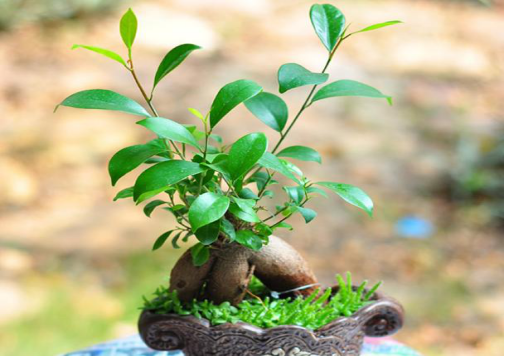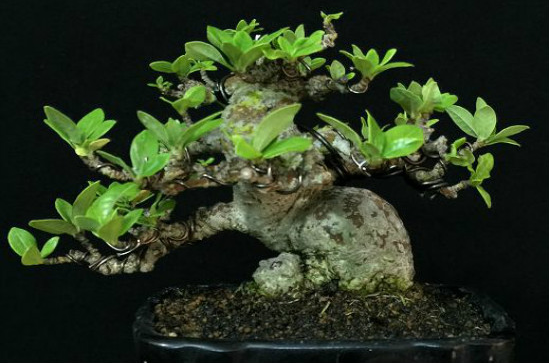The Propagation method of Sea Flower
1. Sow and reproduce.
Every year, September and October is the mature harvest season for sea immortal seeds. After the seeds are collected, the seeds can be collected by drying, crushing and filtering the fruits. Before preparing to sow the seeds, soak the seeds in cold water for three hours, then wrap them in a wet cotton cloth or paper towel and put them in a cool place to accelerate germination. Spray water every day to maintain humidity during the germination process.
After a week, plant the seeds in the flattened and breathable soil, sprinkle a layer of fine sand 1 cm thick on top, and then cover it with plastic film to keep warm and moisturizing.
A few days later, after the seeds began to grow seedlings, the film was removed to see light, and the seedling growth was strengthened and watered. If it is winter, we should pay attention to keep warm. Generally speaking, seedlings can be transferred and planted after one year, and they can blossom and watch in about three years.
2. Striping propagation.
May to September is the season of exuberant growth of sea immortals, and June is the most suitable for striping propagation. The temperature is right at this time, which is suitable for the vigorous growth of the plant. Choose the stolon below when pressing, so it is easy to take root. Striping propagation can usually be carried out in the winter of the same year or in the spring of the following year.
3. Cuttage propagation.
Sea immortal cuttings are suitable for propagation in autumn. When cutting, select semi-lignified new branches, usually annual mature branches, and then cut them into cuttings of about 15 cm in length with scissors, and then cut them. The cuttings should be watered thoroughly and shaded well, which can be covered with film to keep warm in winter to increase the survival rate.

Here are three ways to reproduce sea immortals. Next, let's talk about the late management of sea immortals.
The Propagation method of Sea Flower
The cuttage of sea immortal
The cutting time of sea immortal is from May to September, but it is concentrated in autumn. When cutting, the required material is semi-lignified new branch, generally choose annual mature branch is better. Choose a good cuttage, you can cut it into 15mur20cm long, and then into the cuttage.
Note that sea immortals should be watered enough in the basin after cutting, and then pay attention to shading. Sea immortals can use plastic film to keep warm during the overwintering period, which can increase the survival rate. The growth rate of sea immortal is relatively fast, generally, it can grow 40-50 cm in that year.
The sowing of sea immortals
The seeds of sea immortals can be harvested from September to October. After harvest, the seeds can be obtained by drying, crushing and filtering the fruits. When sowing, soak the seeds in cold water for 3 hours, wrap the soaked seeds with wet cotton cloth or wet paper towels to accelerate germination, pay attention to maintain humidity, spray water every day to prevent shade.
For a week or so, sow the seeds in aerated and smooth soil and cover them with fine sand about 1cm. Cover with plastic film to keep warm and moisturize, wait for the seedlings to come out, go to the plastic film to see the light, and strengthen the management of water charges in the later stage. Seedlings during the winter to pay attention to cold, a year later can be moved seedlings, 3 years or so can watch the sea immortal flowers.
The embossing of the sea immortal
Sea immortals can reproduce in May-September when the growth is exuberant, and June, when the temperature is higher, is the best, when the temperature is suitable, the plant grows vigorously and it is easy to take root. The branches choose the lower creeping branches, and the branches are easy to take root.
The striping can be separated from the mother plant in the winter or spring of the following year. Pour water into the tray when the weather turns warm in April and May, and use the capillaries of the soil to absorb the water.
The later stage Management of Sea Immortals
Sea immortals are fertilized once before germination in spring to meet the exuberant demand of the growing season, and topdressing 2-3 times in the growing season to promote growth. Pruning should be carried out in early spring to cut off old, weak and withered branches to promote the formation of new flower buds.
Remove inflorescences in time after flowering to promote flowering in the coming year. 2-3 years is a pruning cycle, and the old branches of more than 3 years are properly cut off to promote the growth of new branches.
How do sea immortals reproduce? Propagation methods and late management of sea immortal
Picture: sea immortal
[FAQ] how do sea immortals reproduce? What are the breeding methods of sea immortals?
[expert answer] Sea immortal is a kind of flower with high ornamental value. The propagation methods of sea immortals mainly include cutting propagation, sowing propagation and striping propagation. At the same time, sea immortals should also do a good job in the later stage management in the process of propagation, the specific methods are as follows:
[methods of propagation of sea immortalis]
1. Cuttage propagation
The cutting time of sea immortal is from May to September, but it is concentrated in autumn. When cutting, the required material is semi-lignified new branch, generally choose annual mature branch is better. Choose a good cuttage, you can cut it into 15mur20cm long, and then into the cuttage.
Note that sea immortals should be watered enough in the basin after cutting, and then pay attention to shading. Sea immortals can use plastic film to keep warm during the overwintering period, which can increase the survival rate. The growth rate of sea immortal is relatively fast, generally, it can grow 40-50 cm in that year.
Picture: sea immortal
two。 Sowing and reproduction
The seeds of sea immortals can be harvested from September to October. After harvest, the seeds can be obtained by drying, crushing and filtering the fruits. When sowing, soak the seeds in cold water for 3 hours, wrap the soaked seeds with wet cotton cloth or wet paper towels to accelerate germination, pay attention to maintain humidity, spray water every day to prevent shade.
For a week or so, sow the seeds in aerated and smooth soil and cover them with fine sand about 1cm. Cover with plastic film to keep warm and moisturize, wait for the seedlings to come out, go to the plastic film to see the light, and strengthen the management of water charges in the later stage. Seedlings during the winter to pay attention to cold, a year later can be moved seedlings, 3 years or so can watch the sea immortal flowers.
3. Striping propagation
Sea immortals can reproduce in May-September when the growth is exuberant, and June, when the temperature is higher, is the best, when the temperature is suitable, the plant grows vigorously and it is easy to take root. The branches choose the lower creeping branches, and the branches are easy to take root.
The striping can be separated from the mother plant in the winter or spring of the following year. Pour water into the tray when the weather turns warm in April and May, and use the capillaries of the soil to absorb the water.
Picture: sea immortal
4. Later stage management
Sea immortals are fertilized once before germination in spring to meet the exuberant demand of the growing season, and topdressing 2-3 times in the growing season to promote growth. Pruning should be carried out in early spring, old and weak withered branches should be cut off to promote the formation of new flower buds; inflorescences should be removed in time after flowering to promote flowering in the coming year. 2-3 years is a pruning cycle, and the old branches of more than 3 years are properly cut off to promote the growth of new branches.
[editor's summary] Sea immortals have strong adaptability and simple maintenance, so whether they choose cutting, sowing or striping, the survival rate is very high. You can rest assured to choose your favorite breeding method to propagate.
- Prev

Inducement-- the reason for the loss of leaves of ginseng banyan
1. Normal phenomenon: if it is a newly bought ginseng banyan leaves, there is no need to worry too much, because this is the ginseng banyan to adapt to the new environment, is a normal phenomenon, let it slowly slow down the seedlings. two。 Growth habits: ginseng banyan is native to tropical rain forest areas with high temperature, rainy climate and humid climate
- Next

Culture method of Gardenia jasminoides
1. Soil. Lobular gardenia is usually planted in a pot for ornamental, so breeding lobular gardenia, potted soil is very important. Lobular gardenia is suitable for slightly acidic soil with good loose drainage, so rotten leaf soil or fertile peat soil can be selected for cultivation. 2. Lighting
Related
- Fuxing push coffee new agricultural production and marketing class: lack of small-scale processing plants
- Jujube rice field leisure farm deep ploughing Yilan for five years to create a space for organic food and play
- Nongyu Farm-A trial of organic papaya for brave women with advanced technology
- Four points for attention in the prevention and control of diseases and insect pests of edible fungi
- How to add nutrient solution to Edible Fungi
- Is there any good way to control edible fungus mites?
- Open Inoculation Technology of Edible Fungi
- Is there any clever way to use fertilizer for edible fungus in winter?
- What agents are used to kill the pathogens of edible fungi in the mushroom shed?
- Rapid drying of Edible Fungi

